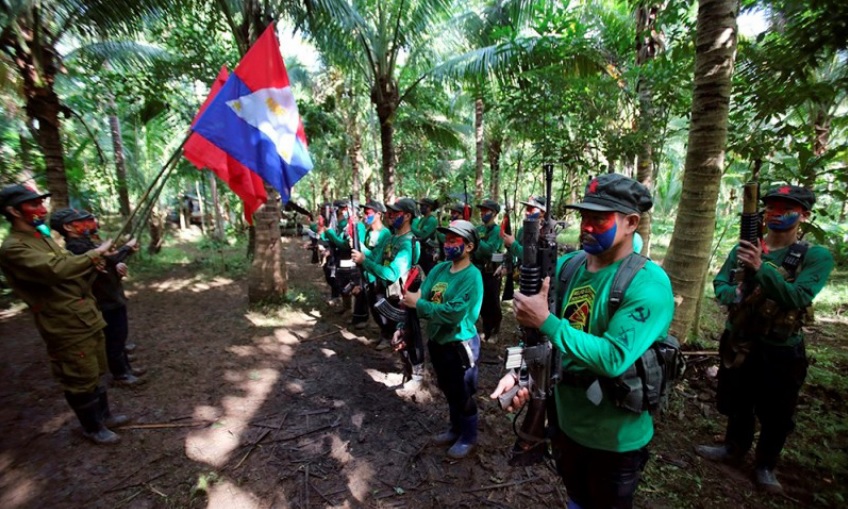

In a classic 1960 chess match, Russian Boris Spassky defeated American Robert Fisher with the popular 16th century opening called “King’s Gambit,” risking a minor piece to gain positional advantage.
Modern chess players seldom use the “King’s Gambit” in world championship matches because many grandmasters have found ways to counter this opening effectively.
Rodrigo Duterte might be an astute chess player, employing a gambit when he offered his former mentor, Jose Maria Sison, an olive branch to politically settle the country’s decades-old Maoist-led rebellion, Asia’s longest-running insurgency which has killed more than 40,000 people.
The security problem arising from guerrilla activities in resource-rich but poor regions in the country has stunted economic growth, as investors have shunned areas where the rebels are very active. The communist party’s military arm, the New People’s Army (NPA), has been demanding “revolutionary taxes” from plantations, mines, construction and telecommunications companies.
On a Christmas week, Duterte mutually agreed to impose a simultaneous unilateral ceasefire from Dec. 23 until Jan. 7 to help create the proper atmosphere for the resumption of the on-again, off-again peace talks with the National Democratic Front (NDF), the political arm of the Communist Party of the Philippines (CPP).
Just a week before, during a speech at the 84th anniversary of the Armed Forces of the Philippines, Duterte ordered the military to crush decisively the 3,000-member NPA. A year ago, he scrapped peace negotiations due to rebel violence.
Thus, the sudden ceasefire declaration and offer to sit down again with the rebel peace panel surprised many, at a time when the government was poised to launch an all-out offensive against guerrilla bases under the “whole-of-nation approach” spelled out in Executive Order 70, which formed a “National Task Force to End Local Communist Armed Conflict.”
What is Duterte’s game plan? Why the sudden policy shift? Is the government setting up a trap for the CPP-NDF-NPA (CNN)?
Duterte tried a softer approach when he first came to office in 2016, inviting left-leaning personalities into his Cabinet, resuming talks suspended for years under the previous administration. For the first time, former rebels stepped inside the halls of power.
But the honeymoon soon ended as both sides intensified armed conflict in the countryside, forcing Duterte to end talks in 2018. No holiday truce was declared by the government that year.
The turnaround this Christmas was totally unexpected.
The president was probably giving the rebels the last chance to politically settle the insurgency problem before moving decisively to strategically defeat the rebel group, inviting Sison to return to the country to hold face-to-face talks.
In the last 12 months after Duterte ended talks in 2018, the interior and local government and defense departments laid out plans to dismantle the remaining guerrilla fronts after clearing many areas of rebel influence.
A retired army general, Secretary Eduardo Año, the interior and local government chief, has been closely coordinating with the peace and order councils and the economic development councils from the national down to the regional, provincial, municipal and barangay levels.
Secretary Delfin Lorenzana, another retired army general, has said the military was prepared to support localized peace talks with specific guerrilla units to end the insurgency as army units reported hundreds of rebels and their mass base giving up the armed struggle.
But the most effective way of ending the rebellion is to address the root causes of the insurgency. As long as people in rural communities do not feel the real presence of government, there would be rebel groups seeking to fill in the vacuum.
The big challenge for government is to eliminate poverty, ignorance, injustice, inequality, neglect and corruption. Unless the water is drained, fishes will continue to swim in the pond.
Senior military commanders who have attended the National Defense College of the Philippines have been learning the strategy on how to fight insurgency. The Philippines has vast experience in counter-insurgency and can look into models in other countries, like Malaysia, Colombia and Nepal.
Civilian agencies have to step up and do their part. Municipal and city mayors must play a bigger role in defeating the rebels. They must be pro-active in the delivery of basic services. Sadly, many of them were not felt when disasters, like earthquake and typhoons strike their communities. How could they solve insurgency when their presence is not felt during natural calamities?
Local officials must take advantage of the very high popularity of the president to bring changes in their communities and hopefully lift the people’s trust and confidence on government.
Localized peace talks will have higher chances of success if the people see their local officials working for them. The people will no longer turn to the NPA rebels for swift justice if local governments show more compassion and concern to the powerless and the marginalized sector.
In July this year, at the opening of the joint session of Congress, Duterte spoke about the country’s biggest problem – corruption. The problem has deprived communities of much-needed resources to develop, fattening only the pockets of politicians and leaving their constituents begging for crumbs.
Perhaps, the president saw the corruption problem in local government as a possible obstacle in carrying out his administration’s all-out war against the rebel movement. Duterte might be buying time because the jigsaw pieces are not in place to complete a perfect picture to defeat the communists.
Time is ticking fast and Duterte has to work doubly hard to end the insurgency before he steps down in 2022. For now, it’s worth to wait and watch if Duterte’s gambit will work.